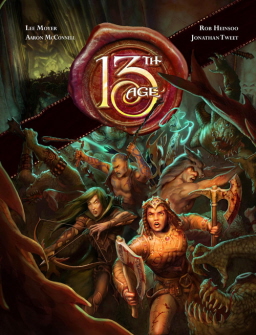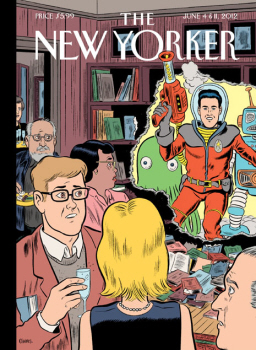Vintage Treasures: Henry Kuttner’s “The Graveyard Rats”
 This is the latest of my short fiction reviews, following my recent reports on Howard Waldrop’s “The Ugly Chickens,” George R.R. Martin’s “Nightflyers,” and others.
This is the latest of my short fiction reviews, following my recent reports on Howard Waldrop’s “The Ugly Chickens,” George R.R. Martin’s “Nightflyers,” and others.
In honor of the recent release of the massive Henry Kuttner collection, Thunder in the Void, I thought I’d talk about Kuttner’s first published story, “The Graveyard Rats,” which appeared in the March 1936 Weird Tales — alongside The Hour of the Dragon by Robert E. Howard, Edmond Hamilton’s “In the World’s Dusk,” Clark Ashton Smith’s “The Black Abbot of Puthuum,” and “The Crystal Curse” by Eando Binder.
Quite auspicious company! I found echoes of both Howard and Lovecraft in the opening paragraphs. Here, see what you think:
Masson… recalled certain vaguely disturbing legends he had heard since coming to ancient, witch-haunted Salem — tales of a moribund, inhuman life that was said to exist in forgotten burrows in the earth. The old days, when Cotton Mather had hunted down the evil cults that worshipped Hecate and the dark Magna Mater in frightful orgies, had passed; but dark gabled houses still leaned perilously towards each other over narrow cobbled streets, and blasphemous secrets and mysteries were said to be hidden in subterranean cellars and caverns, where forgotten pagan rites were still celebrated in defiance of law and sanity. Wagging their grey heads wisely, the elders declared that there were worse things than rats and maggots crawling in the unhallowed earth of the ancient Salem cemeteries.
And then, too, there was this curious dread of the rats. Masson… had heard vague rumours of ghoulish beings that dwelt far underground, and that had the power of commanding the rats, marshalling them like horrible armies. The rats, the old men whispered, were messengers between this world and the grim and ancient caverns far below Salem. Bodies had been stolen from graves for nocturnal subterranean feasts, they said.
What a great opening. I especially enjoyed the promise of a tale of eldritch and powerful subterranean evils… although truthfully, he had me at “frightful orgies.”
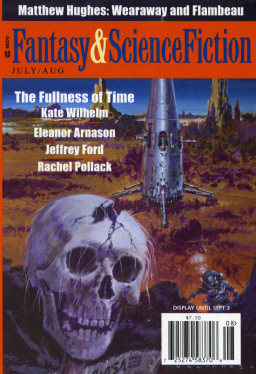
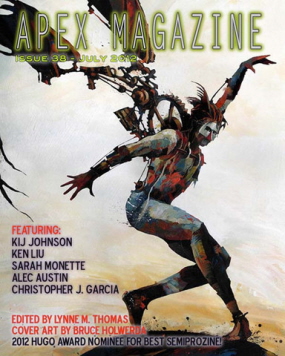
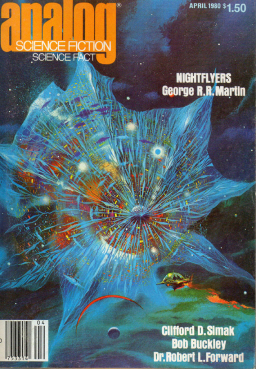
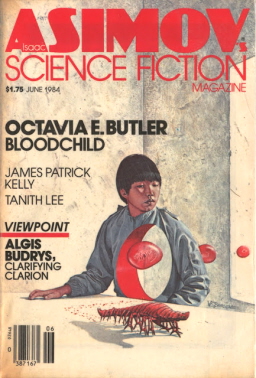

 June’s Apex Magazine features ”Winter Scheming” by Brit Mandelo, “In the Dark” by Ian Nichols and “Blocked by Geoff Ryman (who is interviewed by Maggie Slater), as well as Seanan McGuire’s poem, “Wounds.” Ken Wong provides the cover art. Nonfiction by Tansy Rayner Roberts and editor Lynne M. Thomas round out the issue.
June’s Apex Magazine features ”Winter Scheming” by Brit Mandelo, “In the Dark” by Ian Nichols and “Blocked by Geoff Ryman (who is interviewed by Maggie Slater), as well as Seanan McGuire’s poem, “Wounds.” Ken Wong provides the cover art. Nonfiction by Tansy Rayner Roberts and editor Lynne M. Thomas round out the issue. A version for the Nook will also be available in the near future. Twelve issue (one year) subscription can be ordered at Apex and Weightless for $19.95;
A version for the Nook will also be available in the near future. Twelve issue (one year) subscription can be ordered at Apex and Weightless for $19.95; 